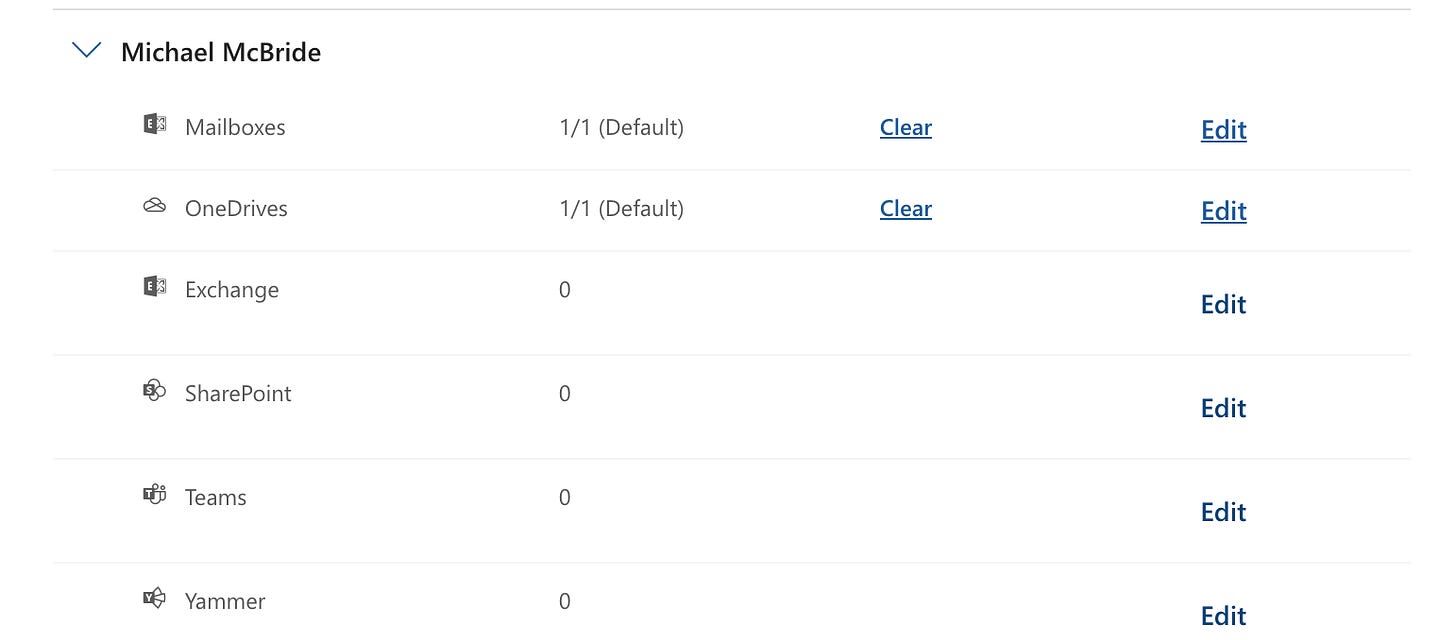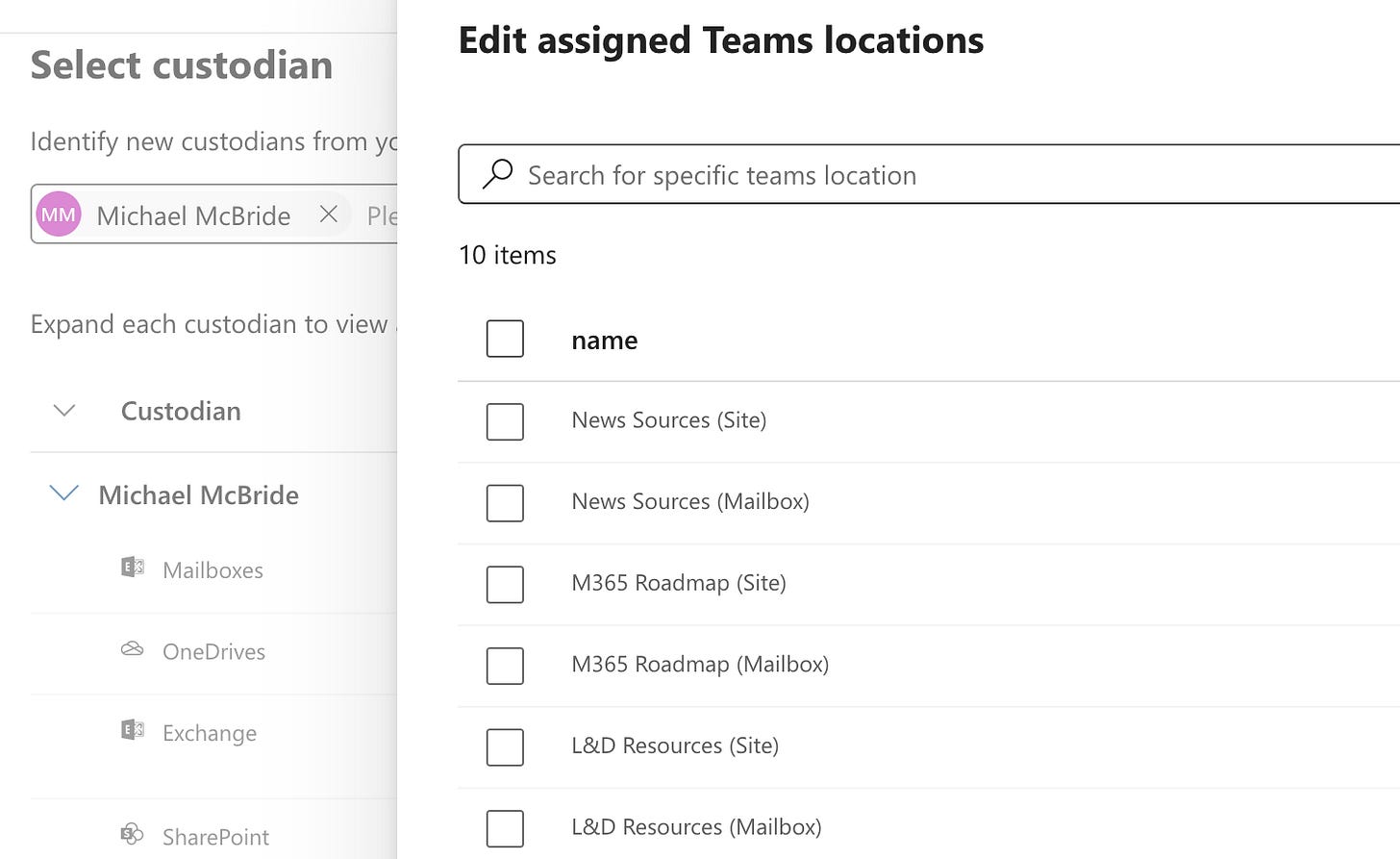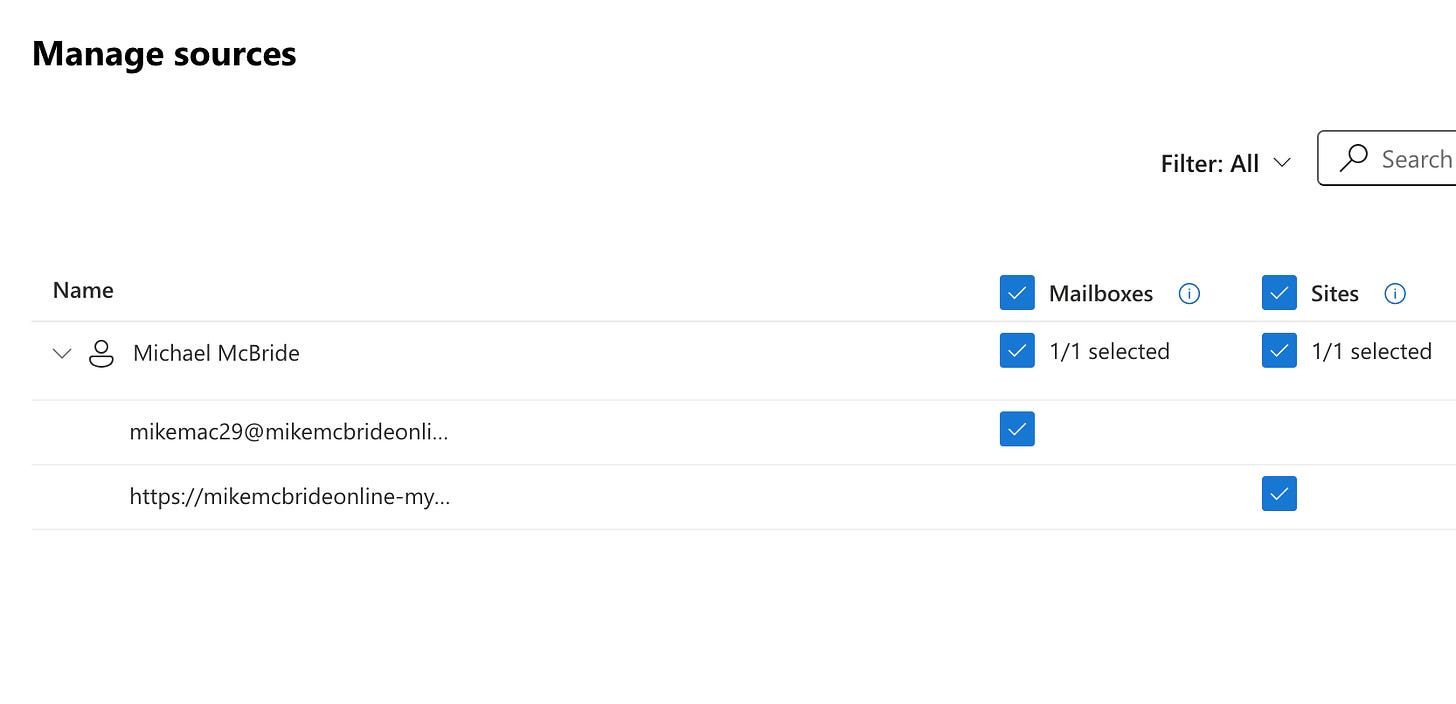M365 Group Membership Lookup in the New eDiscovery Interface
It isn't as obvious, but it can be done.
If you’ve been subscribed to the newsletter for a while, you may remember how happy I was when Microsoft included the ability to look up what Teams a Custodian was a member of, what SharePoint sites they had access to, etc.
The workflow here was obvious. If I am investigating an individual, or we’ve identified an individual as a priority custodian of data related to litigation, knowing what Teams channels they were part of becomes paramount. I was hesitant about whether I would collect that data and identify them as the custodian of shared Teams data, but knowing which teams were in play could be a huge help. (BTW, it turns out that Premium no longer does this. Even when collecting from a Custodial Data Source that includes a Teams mailbox/site, it assigns a GUID as the Custodian of items collected from the Teams locations versus the user mailbox and OneDrive. This is excellent. This may also be old news to many of you. I haven’t looked at it in a long time, to be honest.)
One of the first things I noticed in previewing the new Purview eDiscovery interface was the lack of that information when I added a user as a data source.
Here’s a visual comparison.
Premium eDiscovery when adding my user account as a data source:
Choosing the Edit button next to Teams, Yammer, Exchange, or SharePoint gave me a list of those resources I had access to:
In the new Purview eDiscovery interface, adding my user account as a data source didn’t display that information:
It defaults to my mailbox and OneDrive. That was it.
This was disappointing, but we can look up more information from a different screen. It wasn’t obvious, but there’s a similar feature buried in a menu.
Keep reading with a 7-day free trial
Subscribe to Mike McBride on M365 to keep reading this post and get 7 days of free access to the full post archives.





